Tuesday, August 27, 2019
Tuesday, August 20, 2019
Tuesday, August 13, 2019
How to Generate More Traffic with Google’s New Features
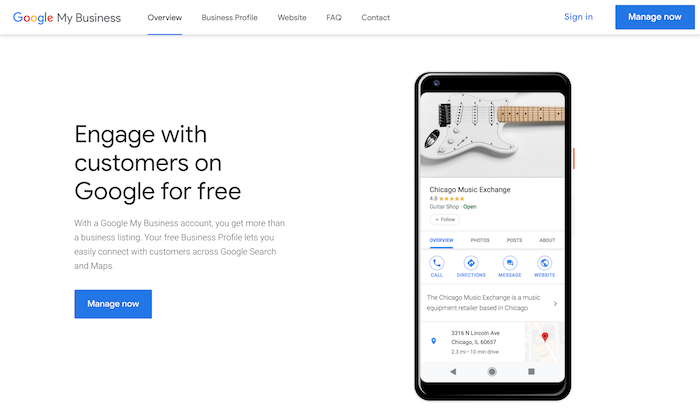
You’re probably already familiar with Google My Business.
If you aren’t, as a quick recap, Google My Business is a simple way to claim your office address or storefront on Google.
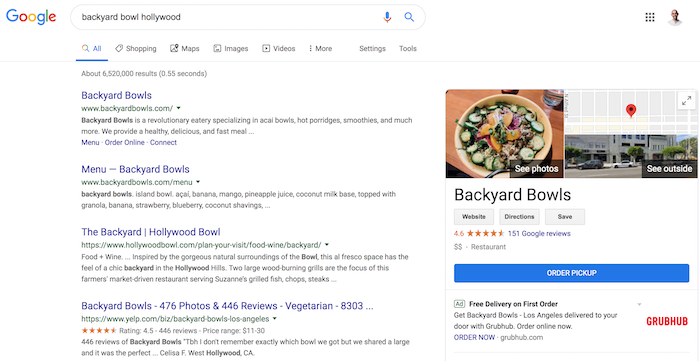
That way, when someone searches for your business, you’ll show up on the right side of a Google search like the image above.
Or better yet, when someone searches for a product or service you’ll offer, you’ll show up in the local pack.
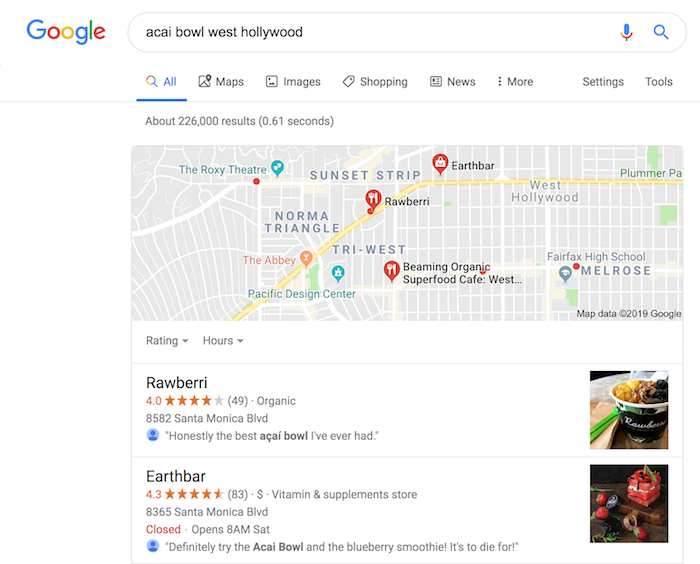
What’s interesting, though, is Google has been making changes to it, which means it just got easier to generate leads and sales for you.
Best of all, very few marketers are even leveraging these features.
Welcome Offers
What’s one of the easiest ways to generate more sales?
By offering discounts and coupons, right? Just think of it this way, if it didn’t work, Cyber Monday wouldn’t bring in $7.8 billion in sales.
Google knows that people are looking for ways to save money and find good deals. With this new feature, businesses can reward their customers by giving them welcome offers.
By following your business, they can get first-time deals and always keep in touch to see when new deals are posted.

Not only will this bring you new customers but also repeat customers because people will be notified every time you have new deals.
To set up a welcome offer, open your Google My Business app and tap on your profile. Under “Turn followers into customers,” click on ‘Create Welcome Offer’ and hit ‘Create.’
You can enter the following information in your offer:
- Title (30% off oil changes)
- Description
- Coupon Code (Optional)
- Terms and Conditions (Optional)
- Website (Optional)
Once finished, you can preview your message and publish. For notifications on new followers, and editing or deleting offers, you can read more on Google Support.
Generate leads in just a few clicks
Google is now adding a “Request a Quote” button in your business listing which was discovered by Joy Hawkins and can also be seen on mobile when searching branded terms.
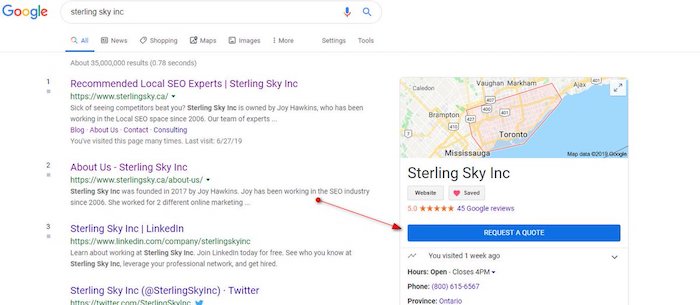
This is happening with businesses that have the Google My Business messaging feature on.
To enable messaging, open the Google My Business app and go to your listing.
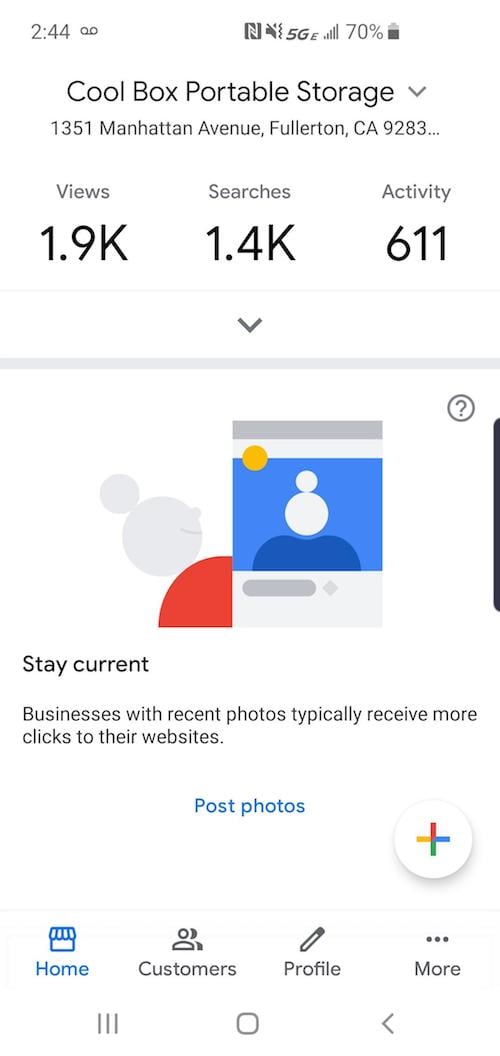
Navigate to Customers -> Messages and turn on!
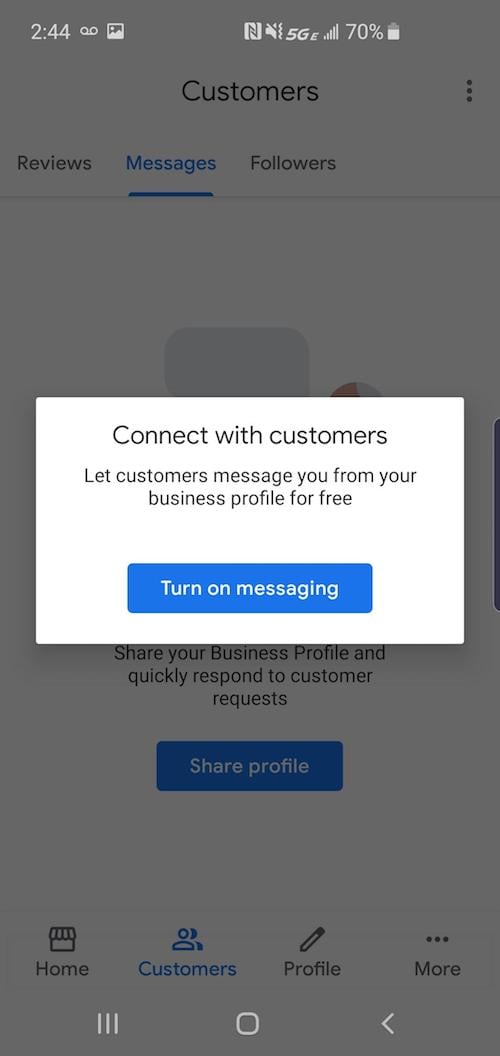
People will now be able to ask for quotes on cars, insurance, and pretty much any service out there.
You can even review these quotes and reply to them within the Google My Business App and connect with your customers easily for a quick sale.
Make sure you claim your URL
Businesses can now claim a Short Name and URL for their listing.
If you haven’t claimed your URL, make sure you do so before it gets taken by someone else.
Don’t get too crazy though as you can only change your short name three times per year. You can enable this by navigating to your locations page, click “Info” on the left-hand side, and see “add short name”.

You may not think this is a big deal, but if you have used Google My Business before, then you know it’s not easy to share your profile on business cards, emails, and text messages without posting a huge URL.
With short names, your landing page will show as g.page/businessname and can be easily shared.
A business can choose a name between 5 and 32 characters and it can contain the business name, location, and more. People can still flag a name for impersonating another business or if the name is offensive, fake, spammy, or contains inappropriate terms.
So, remember not to violate any policies with your name.
I recommend doing this as it will make it easier for your customers to refer back to your profile where they can read updates, post, make reservations, read/write reviews, and more!
And eventually, people will be able to search short names in Google Maps to find the businesses they love.
Google Assistant
Google is now letting customers order food from restaurants and stores via Google Assistant, which is delivered through DoorDash, Postmates, Delivery.com, Slice, ChowNow, and Zuppler, with other partners possibly coming soon.
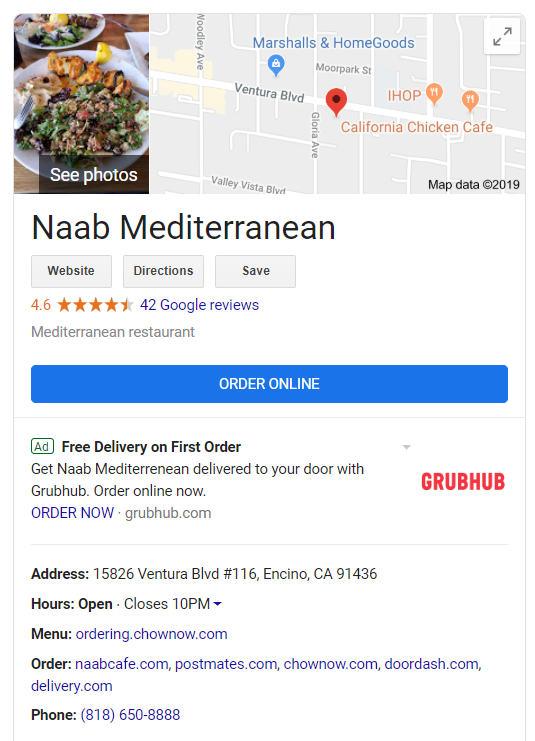
Users can click on Order Now on the listing and can choose pick-up or delivery and if they want to order ASAP or schedule for later. Payment happens through the default payment on Google Pay. If they do not have one, they will be able to add credit card information through this too.
Additionally, customers can order food by using Google Assistant by saying “Okay Google, order food from [restaurant].” If the user has ordered before, it will let them see past orders.
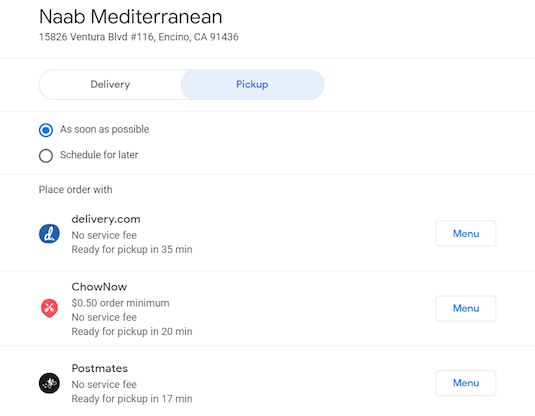
Updating your menu online, as well as delivery service carriers and their apps will help get you started on this.
You’ll want to make sure your menus are consistent through all your service carriers to get the best orders to your hungry customers.
And of course, I know there is a good chance you don’t have a restaurant or aren’t in the food delivery business, but expect to see more ways Google My Business gets integrated with Google Assistant.
It’s better to be early than late.
And speaking of food, Google has also added the popular dish tab on your menu which features images and menu items that people love the most.
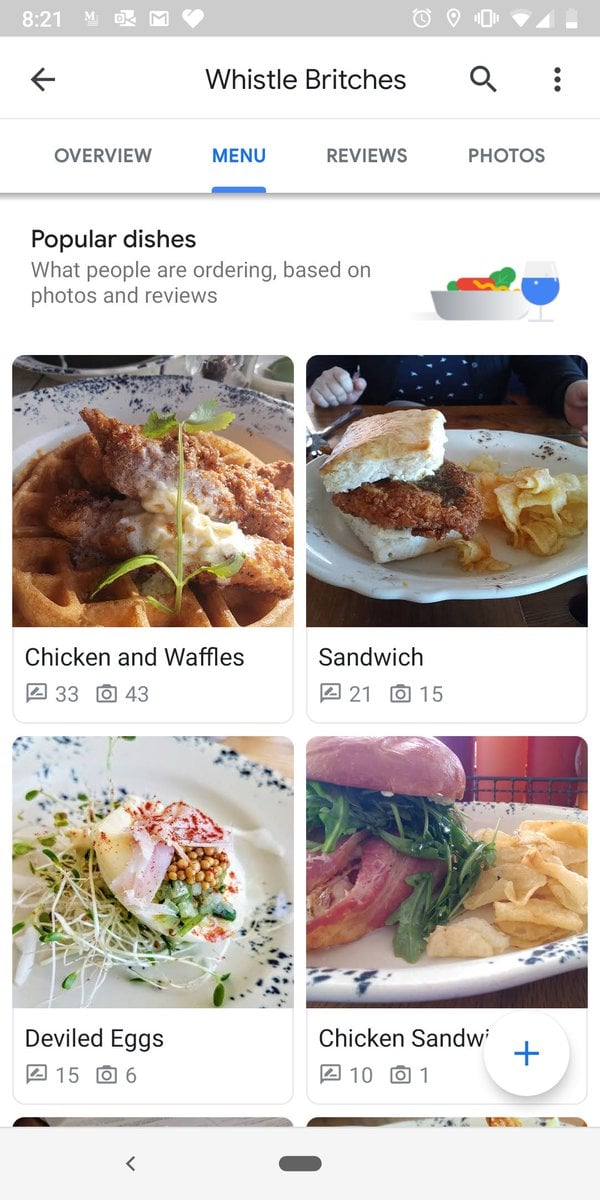
This scans reviews and images on your Google My Business profile to find the most commonly mentioned dish and adds it to your popular dish tab. Of course, if anything is wrong, you can suggest edits to these.
This helps if there are dishes without names, wrong names, or typos can be fixed.
Auto-generated posts based on reviews
Look, you are busy, but you have no choice but to create content.
Google has given you easier ways to generate posts… in essence, they are now creating auto-generated posts for you.
These recommended posts are suggested through customer reviews on your Google My Business profile and are similar to their Small Thanks program, which tried to get you to highlight reviews given by previous customers on social media and even being able to print it out and display it on your business walls.
You are probably wondering why should you use it, right?
This helps keep people engaged in your profile if you haven’t posted on Google My Business in a while and gives you fast and easy publishing. It even gives you options to customize backgrounds with images and colors.
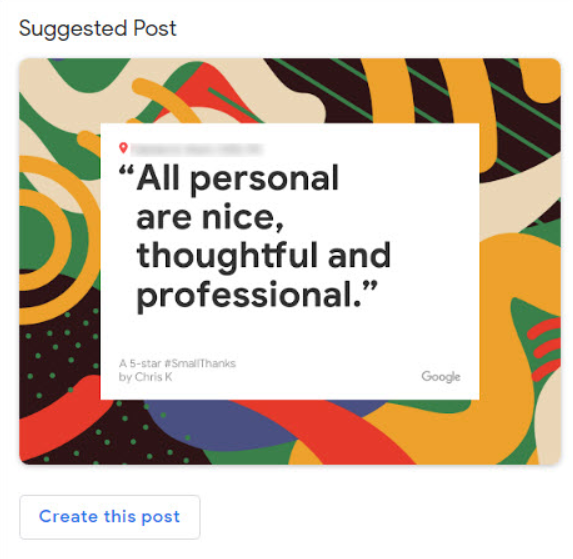
This will pop up on your Google My Business dashboard and all you have to do is hit “Create this post”.
There’s no real way to pick other reviews for Suggested Posts, but you are always welcome to create your own. This is just a simple feature created to help engage your audience more.
Boost your conversions by controlling your images
Businesses can now set a preferred profile cover photo in your image carousel and have a place for logos at the top-right of your profile next to the business name.
This is an additional feature to the regular NAP (Name, Address, Phone Number) as well as business hours and will be prominently featured.

You can easily create offline material
Google is launching a website where businesses can order and get custom promotional items such as stickers and posters to advertise their business. This is in hopes that it will entice customers to follow places on your profile, add reviews, and create bookings.
You can even order signs like ‘follow us on Google’ and more for free (one shipment per location).

For posters, you can use the editor to create your own type of poster that can be downloaded and easily printed by yourself or a local printing company. If posters aren’t your cup of tea, you can even share these on social media.
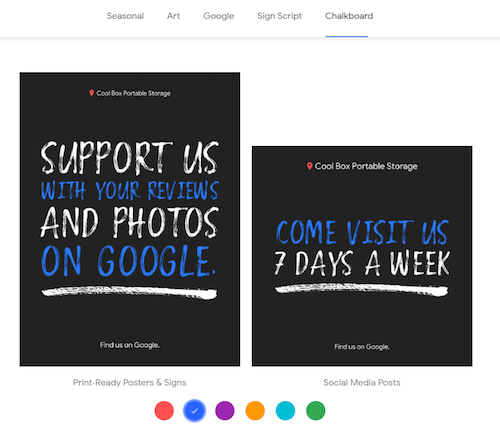
This is currently free as it is a downloadable offer, but you may want to pay to have someone print this out in poster size or as stickers to put on your business windows.
Just think of it this way, people put Yelp signage everywhere because it works. Chances are, it will work on Google as well.
Place Topics
Google launched Place Topics which uses data based on reviews to help give information on what previous customers think about your business.
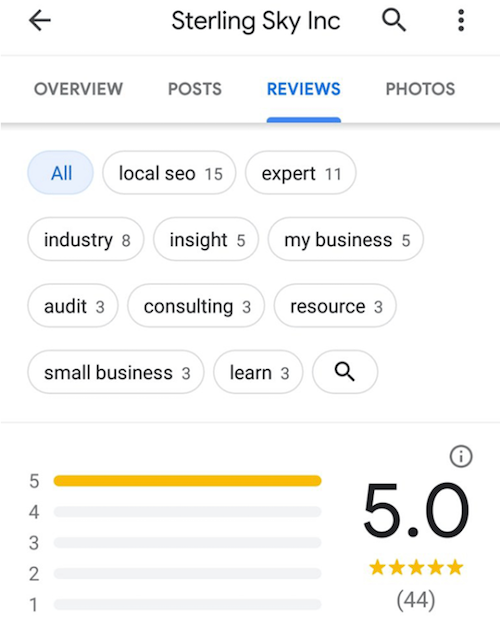
This can help users see themes of reviews at a glance for businesses and it’s all automated.
It’s kind of like a tag cloud.
This does mean that you cannot generate these yourselves or edit them. So, if you don’t have one, you may not have enough reviews.
Also, if you have a negative one, there’s potentially no way of removing this unless you get the review removed. So, make sure your happy customers are leaving reviews is very important.
Possibly entice them with a 10% discount the next time they come… assuming you aren’t breaking any policy guidelines.
Q&A Auto-Suggest Answers
This feature that Google updated uses previous answers to questions and Google My Business Reviews to answer new questions on the spot. As you start writing the question, different answers start to pop up to give you the best match.
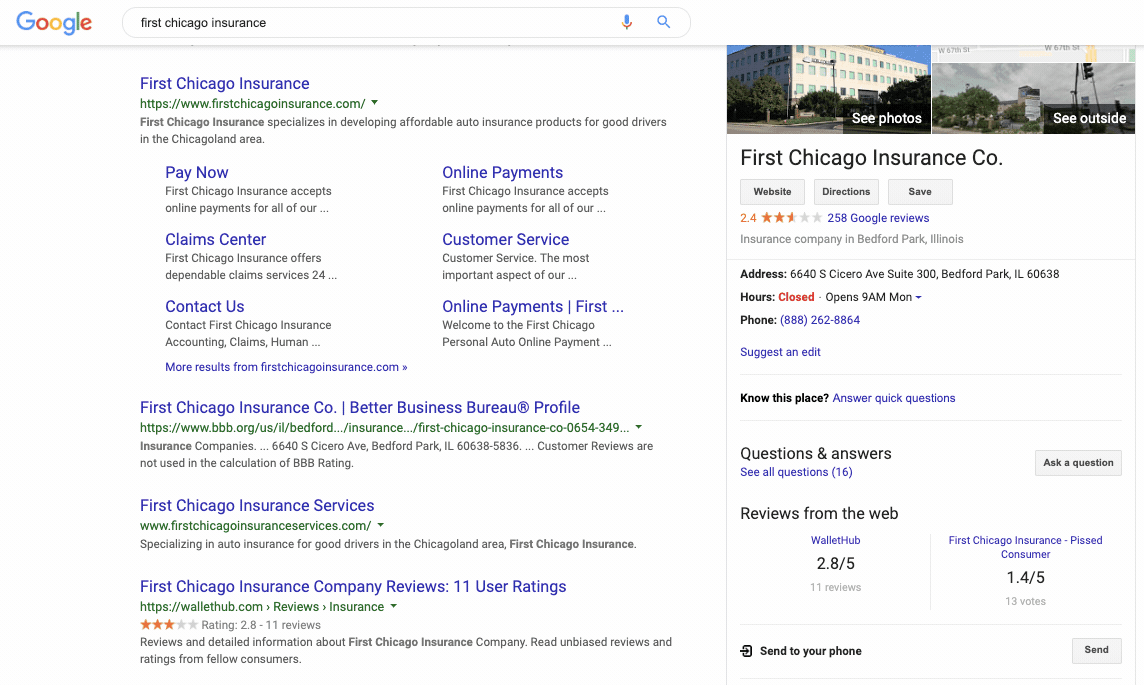
So how can you make sure people get the most accurate answer?
Similar to place topics, encouraging your customers to leave detailed reviews of their experience really helps. The more detailed the review is, the better the question gets answered.
Of course, people who are searching for answers can potentially see negative reviews such as prices are too high, service takes long, very long waits on weekends, and more.
In other words, always encourage positive reviews from your loyal customers.
Conclusion
If you haven’t used Google My Business before, you should check it out. With their updates and new features, it is now easier to generate sales and collect leads.
In the future, you’ll see a much deeper integration between Google My Business and Google Assistant. This is going to be important as 50% of the searches will soon by voice searches according to ComScore.
Make sure you are leveraging all of these features and release Google is releasing because it doesn’t cost you money and if you get in early enough, you’ll have an advantage over your competition.
So are you using Google My Business to it’s fullest extent?
The post How to Generate More Traffic with Google’s New Features appeared first on Neil Patel.
Monday, August 12, 2019
Marketing B2B: O Que é, As 10 Estratégias Mais Usadas e Exemplos
![]()
O marketing B2B é essencial para que empresas que vendem para outras empresas consigam gerar leads qualificados que possam ser convertidos em clientes.
Se você tem esse tipo de negócio e seu planejamento de marketing ainda deixa a desejar, siga com a leitura deste artigo.
Implementar ações de marketing B2B é uma tarefa desafiadora, já que vender para outras organizações envolve muitos desafios.
Mas o fato é que essas ações fazem toda a diferença na hora de conduzir clientes em potencial por meio do funil de vendas e construir relacionamento com eles.
E a boa notícia é que existem várias estratégias que você pode colocar em prática: blog, redes sociais, webinars e e-mail marketing, por exemplo.
Se você ficou curioso para entender melhor sobre o assunto, confira alguns tópicos que eu vou abordar durante o artigo:
- O que é marketing B2B
- Importância
- Diferenças entre B2B e B2C
- Tipos de negócio
- Estratégias de marketing B2B
- Exemplos de empresas.
Quer saber mais?
Então, boa leitura.
O que é marketing B2B?

Marketing B2B é o processo de aplicar uma estratégia de marketing para vender para outra empresa. B2B é quando uma organização compra um serviço ou produto de outra para revender, usar como componente para a fabricação de seus próprios produtos ou incluir nos processos do negócio para otimizá-los.
Antes de entrar na questão do marketing, é preciso entender o B2B, que é um conceito relativamente simples de entender.
A sigla B2B vem da expressão em inglês business-to-business, ou seja, de negócio para negócio.
Em uma definição para o site Investopedia, James Chen, estrategista de marketing, dá dois exemplos de como essa transação pode ocorrer:
- Entre um fabricante e um atacadista
- Entre um atacadista e um varejista.
É diferente de quando uma empresa vende para o consumidor final, processo que se denomina B2C (business-to-consumer).
O marketing B2B consiste em aplicar estratégias direcionadas para outras empresas.
Muitas vezes, esse é um desafio ainda maior, uma vez que o cliente será um gestor de negócios, que vai considerar todas as variáveis do serviço antes de tomar uma decisão.
Isso acontece porque, ao comprar a solução, a ideia é que ela aprimore a empresa de alguma forma, demonstrando potencial de aumentar lucros e otimizar processos.
A importância do marketing B2B

Contar com planejamento de estratégia de marketing é fundamental para qualquer negócio.
Quando falamos de empresas que vendem para outras empresas, não é diferente.
A importância do marketing B2B está no fato de que esse tipo de negócio precisa concentrar esforços em gerar leads qualificados.
Esse enfoque é crucial para tornar usuários em leads e, a partir disso, conduzi-lo no funil de vendas até que se tornem clientes.
Como a compra de uma solução no mercado B2B envolve uma tomada de decisão cuidadosa, o marketing precisa ser utilizado como uma peça-chave para apoiar esse processo.
Afinal, gestores que estão em busca de um produto ou serviço para a sua empresa querem ter certeza de que estão fazendo a escolha certa.
Mas até que isso aconteça, eles precisam ser educados, depositar confiança no vendedor, conhecer as ferramentas disponíveis e receber treinamento para utilizá-las.
Ou seja: o processo é longo, e quanto maior for a eficácia do marketing B2B em criar relacionamento com clientes e fornecer conteúdo relevante, maiores são as chances de fechar a venda.
Até porque atualmente empresas que não investem em marketing perdem espaço para a concorrência.
E não é isso que você quer para o seu negócio B2B, não é mesmo?
Marketing B2B e B2C: 10 diferenças entre os dois

Agora que tal descobrir os principais fatores que diferenciam o marketing B2B do B2C?
Nas próximas linhas, você vai compreender melhor esse assunto. Vamos lá.
1. Tamanho dos mercados
O mercado B2C é aquele que abrange todos os consumidores finais.
Envolve a venda de produto e serviços em diferentes segmentos, e a competitividade é cada vez maior.
Portanto, estamos falando de um mercado grande e geralmente amplo.
Já no modelo B2B, o mercado tende a se direcionar para nichos, uma vez que o objetivo é entregar soluções bem específicas para outras empresas - serviços esses que não são procurados pelo público em geral.
2. Processo de compra
Podemos dizer que, no modelo B2B, o processo de compra é mais complexo, podendo levar vários meses para ser concretizada.
Como eu mencionei antes, quem compra está tomando uma decisão que impacta na performance e no orçamento do negócio.
Por isso, a tomada de decisão leva mais tempo e, muitas vezes, a criação de um relacionamento intenso entre as empresas.
Já no mercado B2C, a tendência é que a compra seja efetuada com maior rapidez, podendo ser feita até mesmo por impulso.
3. Processo de vendas
Em relação ao processo de vendas, no marketing B2B, ele é mais complexo, pois demanda um trabalho ainda mais intenso dos vendedores com o cliente.
Antes de comprar, é comum que o consumidor (no caso, alguém responsável pelas aquisições da empresa) queira entender a solução, analisar se ela supre suas necessidades e de que forma pode reverter em mais lucro para o negócio.
Além disso, a confiança em relação à empresa que venda também geralmente deve ser maior do que no mercado B2C.
4. Custo de venda

De maneira geral, o ticket médio no mercado B2B é mais elevado, já que estamos falando de vendas de soluções geralmente complexas e nichadas.
Também há uma decisão importante a ser feita durante o processo, e a compra deve implicar em resultados para quem compra.
Já no mercado B2C, o custo de venda varia conforme o produto ou serviço.
Mas geralmente é um valor mais baixo, uma vez que as empresas vendem produtos ou serviços diretamente para o consumidor.
5. Valor da marca
A criação de valor é diferente para negócios B2B e B2C.
No caso do B2B, o valor é percebido por meio do relacionamento construído no longo prazo, desde o momento em que o cliente ainda é apenas um lead.
Envolve, portanto, o estabelecimento de confiança durante as conversas entre vendedor e consumidor, devido à própria característica da venda.
Claro que isso também acontece nos negócios B2C, mas o fato é que esses também conseguem maior abertura para agregar valor à marca por meio de mídias sociais e publicidade.
6. Valor a longo prazo do cliente
Esse é outro fator que distingue os dois modelos de comércio.
Como eu já disse, o B2B geralmente possui um ticket médio mais elevado.
Ao longo prazo, o valor agregado é maior em relação ao B2C, sobretudo porque é comum que as soluções sejam pagas por assinatura mensal ou precisem ser atualizadas com o tempo.
7. Marketing de conteúdo

Sim, também há um diferença na maneira de produzir o marketing de conteúdo.
No marketing B2C, as empresas têm um pouco mais de flexibilidade, porque nem sempre os produtos e serviços oferecidos precisam ter informações de uso tão detalhadas.
No marketing B2B, o conteúdo deve ser detalhado, relevante e principalmente informativo, para explicar como a solução vendida funciona e pode trazer benefícios para as empresas.
Mas isso não significa falta de flexibilidade.
Em um artigo para a revista Entrepreneur, o growth hacker Syed Balkhi aconselha que negócios B2B façam conteúdos baseados em histórias.
“Um dos maiores erros que a maioria das empresas comete quando elabora conteúdo para estratégias de marketing B2B está tentando ser excessivamente profissional em seu conteúdo”, destaca.
Sabe qual é a razão por trás disso?
Como explica o autor, afinal de contas, o marketing é para quem administra as empresas - pessoas que estão cansadas de ler conteúdo robótico em todos os blogs.
8. Relacionamentos de marca

É claro que, independentemente do modelo em que as marcas atuam, todas elas precisam investir em relacionamento com o cliente.
No B2C, essa relação pode ser construída utilizando o recurso emocional.
Ou seja, incentivando que os clientes se tornem fãs da marca por meio de conteúdo capaz de engajar, muitas vezes, utilizando recursos como o bom-humor.
Já no mercado B2B, o relacionamento deve ser construído por meio de um auxílio intenso na tomada de decisão, focando em solucionar dúvidas de gestores e mostrar a eles de que forma a solução pode fazer diferença no negócio.
9. Intervalo de ciclo de compra do cliente
O intervalo entre cada compra é, de modo geral, maior no mercado B2B do que no B2B.
Afinal, pense na seguinte diferença.
No B2C, o consumidor pode fazer diferentes compras com a frequência que desejar, principalmente quando ele precisa atender suas necessidades imediatas.
Já no B2B, a empresa adquire uma solução que será utilizada em longo prazo e, portanto, permanece com ela até que um serviço melhor possa atender àquela necessidade específica.
10. Duração de contrato
Justamente pelas razões que comentei no tópico anterior, a duração do contrato no modelo B2B tende a ser maior, podendo chegar a meses ou anos.
No B2C, esse período pode levar alguns poucos minutos, enquanto o consumidor está, de fato, concretizando a compra.
3 Tipos de negócios B2B

Que tal conferir três tipos de empresas que fazem transações B2B?
Veja abaixo uma breve descrição de cada tipo de negócio.
1. Especialistas da indústria
Nessa categoria, estão incluídas as empresas que são referência em uma indústria específica.
Portanto, elas vendem para outras organizações que atuam na mesma indústria ou setor.
2. Fornecedores gerais
Os fornecedores gerais vendem produtos ou serviços para qualquer tipo de organização.
É o caso, por exemplo, das agências de marketing, que vendem planejamento de estratégia e presença digital para empresas de vários segmentos do mercado
3. Empresas especializadas em fornecer produtos para distribuidores
Aqui estão presentes as empresas que vendem produtos para outros distribuidores que, por sua vez, comercializam para outras organizações.
Justamente por isso, negócios inseridos nessa categoria têm um público bem específico, podendo fazer uma alta segmentação de marketing B2B.
As 10 principais estratégias de marketing B2B

Nas próximas linhas, elenquei dez estratégias que não podem faltar no seu planejamento. Confira.
1. Apresentações
Que tal criar uma apresentação em slides para falar sobre a solução da sua empresa?
Ter esse recurso sempre com você é crucial, pois assim pode apresentar para leads e clientes durante reuniões.
Apresentações também facilitam a explicação do produto ou serviço, além de fornecer dados relevantes, comprovando como ele pode ajudar nos processos de outros negócios.
2. Blog
O blog também é uma ferramenta fundamental, pois é lá que você pode criar conteúdos de valor, que sejam informativos para o usuário.
Fazendo um trabalho de otimização para mecanismos de busca (SEO), ainda é possível fazer com que pessoas que nunca ouviram falar da sua empresa entrem em contato com ela por meio dos artigos publicados.
3. Canal no YouTube

O YouTube tem hoje mais de um bilhão de usuários - o que equivale a quase um terço da internet.
Diariamente, as pessoas assistem mais de um bilhão de horas de vídeo, gerando bilhões de visualizações, de acordo com o próprio YouTube.
Ou seja, essa plataforma tem um potencial enorme para divulgação de conteúdo de marcas.
Você pode, por exemplo, fazer vídeos explicando como funciona a sua solução, modo de utilização e resultados ganhos na prática.
4. E-mail marketing
De acordo com uma pesquisa de 2018 da Rock Content, 76,7% das empresas já usam e-mail marketing.
Não é à toa, porque esse canal tem um grande potencial para criar relacionamento com o cliente a partir de conteúdos informativos, como as newsletters, por exemplo.
A dica é automatizar o envio de e-mail marketing, personalizando as mensagens para cada grupo de clientes, dependendo do estágio em que eles se encontram no funil de vendas.
5. Infográficos
Infográficos são conteúdos visuais a partir de layouts interessantes e atrativos.
Nesse tipo de recurso, é possível incluir números e estatísticas, organizando os dados com elementos gráficos e até mesmo criando um design interativo.
Utilize dados relevantes para gerar credibilidade ao seu negócio e comprovar os benefícios da solução que você oferece.
6. Redes Sociais
Não é porque você vende para outras empresas que a sua marca não precisa estar presente nas redes sociais.
Pelo contrário, marcar presença nesses canais é importante para aumentar a sua credibilidade e criar relacionamento com possíveis clientes.
7. Webinars

Webinars são seminários online por meio dos quais você pode educar o público, fazendo com que pessoas interessadas na sua solução passem de leads a clientes.
É possível variar os assuntos abordados, mas eles sempre devem ter relação com o nicho de mercado que você atende.
Uma boa opção é promover uma conversa em vídeo com um atual cliente da sua empresa para demonstrar os benefícios da sua solução.
8. Eventos
Outra alternativa são os eventos, que você pode promover para engajar uma comunidade de gestores e líderes e ainda apresentar a sua solução.
Uma estratégia possível é convidar palestrantes que sejam referência no mercado, criando uma programação voltada a temas relevantes na área.
Sem dúvidas, essa será uma oportunidade para deixar o público curioso em relação ao seu produto.
9. Estudos de caso
O estudo de caso é uma ferramenta que permite investigar de que forma a aplicação da sua solução em uma empresa específica impactou os resultados dela.
Portanto, é um recurso eficiente para comprovar a outros possíveis clientes os benefícios do seu serviço ou produto, mostrando um exemplo prático e real que dá credibilidade para a sua marca.
10. Inbound marketing

O inbound marketing consiste em criar estratégias de atração de público por meio de conteúdo relevante.
Ao invés de você ir até o consumidor, como ocorre em uma propaganda tradicional, é ele que vem até você, seja por meio do blog, seja pelas redes sociais.
O mais importante é que seu conteúdo tenha valor e resolva um problema do usuário, pois, dessa forma, ele verá sua empresa como autoridade na área.
E aí, você aumenta as chances de converter aquela pessoa em cliente.
Exemplos de empresas B2B
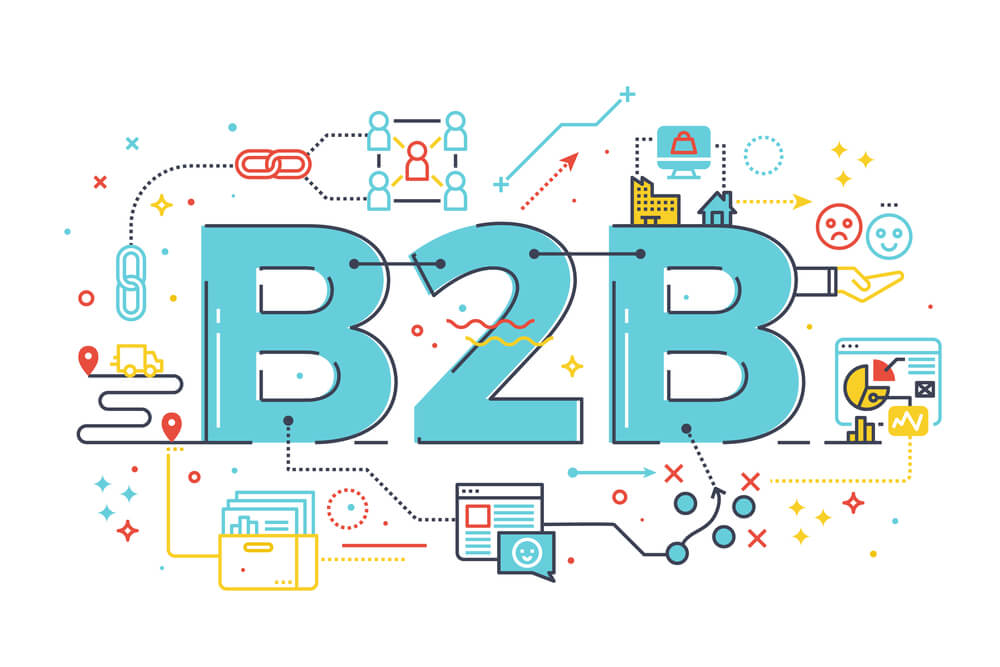
Antes de finalizar a leitura, é hora de conhecer três exemplos de negócios B2B.
Vamos nessa?
Tetra Pak

A Tetra Pak é uma multinacional que vende soluções de processamento e embalagem de produtos, mantendo padrões de segurança e sustentabilidade.
Vale a pena conferir o site da empresa para se inspirar nos conteúdos informativos publicados - lógica que você deve usar no próprio negócio.
Salesforce

Outro exemplo de destaque é a Salesforce, uma empresa de software on demand que desenvolve aplicativos de negócios que ajudam empresas a gerar leads, conquistar clientes e fechar negócios.
Uma das soluções é o CRM para pequenas empresas, um sistema de customer relationship management.
WeWork
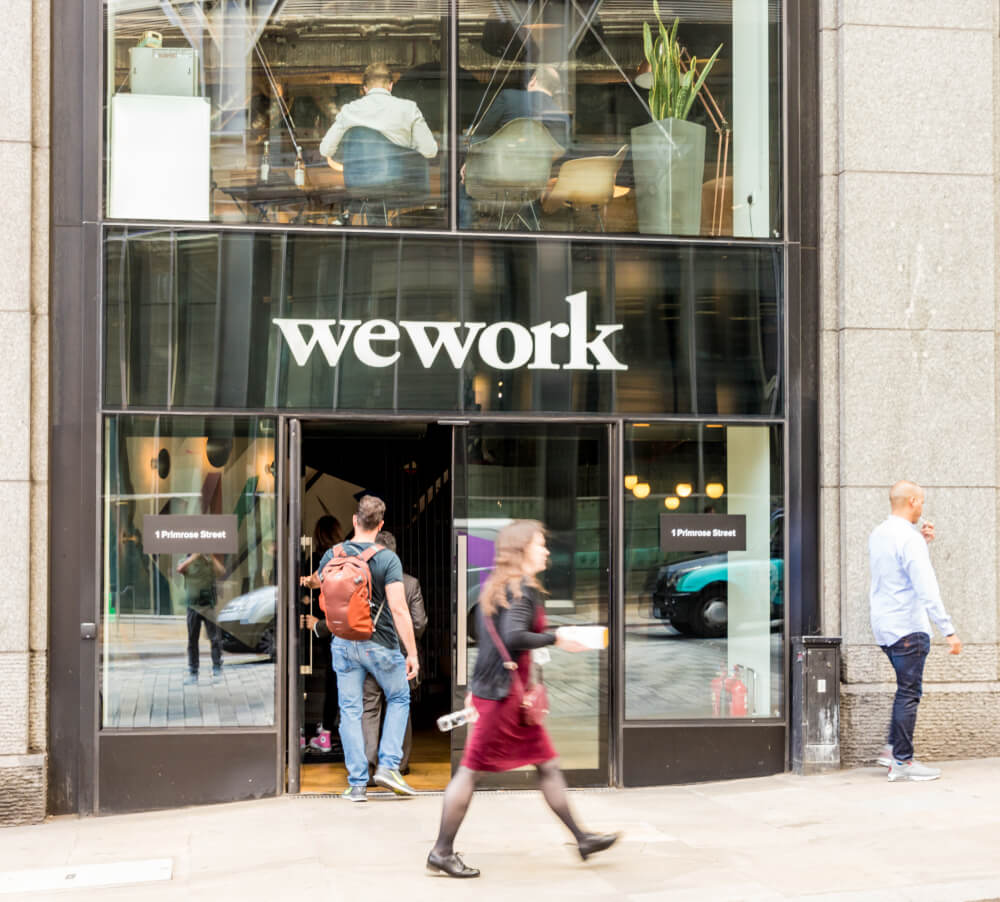
O terceiro exemplo é a WeWork, uma empresa que oferece espaços de trabalho no mundo todo personalizados para cada tipo de demanda.
É interessante que, na página inicial, a empresa tem depoimentos de clientes que obtiveram benefícios com o serviço.
Conclusão
E aí, gostou do conteúdo deste artigo?
Como vimos, o marketing B2B é essencial para empresas que vendem para outras corporações.
Elaborar uma estratégia a partir dos recursos citados ao longo do artigo é fundamental para atrair leads, conquistar clientes e criar relacionamento com eles.
Afinal, vender para outras empresas é um processo complexo, já que a tomada de decisão de gestores é embasada e geralmente leva tempo.
Não é só a venda que importa, e sim o acompanhamento da performance do cliente a partir do momento em que ele adota a sua solução.
E o marketing B2B é essencial nesse desafio.
Se você gostou do artigo, compartilhe nas redes sociais.
Ficou com alguma dúvida a respeito do assunto?
Então, fique à vontade para deixá-la abaixo na seção de comentários.
The post Marketing B2B: O Que é, As 10 Estratégias Mais Usadas e Exemplos appeared first on Neil Patel.
Tuesday, August 6, 2019
Google’s Advice for Surviving Algorithm Changes
In case you missed it, Google just published advice for SEOs on how to continually do well throughout their algorithm changes.
Now, what most people don’t know is Google doesn’t just push out a handful of algorithm changes per year.
They publish substantially more.
Just to give you an idea of how often Google changes, they had 3,200 algorithm changes in just 1 year.
You heard me right, 3,200 changes.
That’s a lot!
So instead of focusing on one algorithm update that you may read about, you need to focus on making your site compatible with Google’s core goal.
First I’ll go over the advice they are telling us all to follow… and then I’ll break down what it really means.
Google’s advice to SEOs
Just like most of their announcements, Google tends to be vague. But of course, they did mention that you should focus on content.
What’s interesting, though, is they did give a list of questions that you should ask yourself with your existing and new content.
But as I mentioned they are vague… so I decided to do something a bit unique. Next to each question that Google provides (in the color black), you’ll find my thoughts on what I think Google is trying to tell you (in the color orange).
Here goes:
Content and quality questions
- Does the content provide original information, reporting, research, or analysis? – Although Google doesn’t penalize for duplicate content, they are looking for new, fresh content. With over a billion blogs on the Internet, there is a lot of regurgitated content out there these days.
- Does the content provide a substantial, complete, or comprehensive description of the topic? – When a user performs a search, Google wants to give them what they are looking for with the least amount of work. They don’t want to have the user go to multiple sites to get their answer. Pages that are thorough and answer all parts of the user’s search query are more likely to rank. In other words, if you write thin content, it probably isn’t satisfactory for the searcher, which means you may not rank as high as you want.
- Does the content provide insightful analysis or interesting information that is beyond obvious? – Does your content have more to offer than what your competition is producing? Go above and beyond by providing additional analysis or drawing your own conclusions using additional data that may be helpful to the reader.
- If the content draws on other sources, does it avoid simply copying or rewriting those sources and instead provide substantial additional value and originality? – Don’t just copy and paste someone else’s content then link to them and provide a few lines of commentary. If you are going to reference someone else’s content, make sure you draw your own conclusions and the majority of the text on that page is unique and useful.
- Does the headline and/or page title provide a descriptive, helpful summary of the content? – 8 out of 10 people read a headline and only 2 out of 10 people click through to read the rest. Your headlines not only need to be appealing, but they need to summarize the content. Don’t just focus on keywords or clickbait, focus on user experience with your headlines.
- Does the headline and/or page title avoid being exaggerating or shocking in nature? – Google can tell if you are using clickbait as that typically causes a high bounce rate. If they see that people are going back to the SERP listing, it means that your content wasn’t up to par and you just used clickbait to trick searchers.
- Is this the sort of page you’d want to bookmark, share with a friend, or recommend? – As Eric Schmidt, the ex-CEO of Google, once said, brands are the solution. Google prefers ranking brands, so don’t prioritize SEO. Focus first on your user. Make them love your content, your product, and your service.
- Would you expect to see this content in or referenced by a printed magazine, encyclopedia, or book? – If you think your content is so great you are willing to print it out and hang it up on your wall, you have done a great job. If you are just creating content for the sake of it, people will be able to tell.
Expertise questions
- Does the content present information in a way that makes you want to trust it, such as clear sourcing, evidence of the expertise involved, background about the author or the site that publishes it, such as through links to an author page or a site’s About page? – The best way to position yourself as an expert is to use data and cite your sources. In addition, if you are going to be an expert, make sure you have your name on the page and even link to your bio.
- If you researched the site producing the content, would you come away with an impression that it is well-trusted or widely-recognized as an authority on its topic? – Compared to your competition how are you seen? If you are more respected and more popular, it shows that you are potentially an expert. You should work on your brand queries as it will help get you more visibility.
- Is this content written by an expert or enthusiast who demonstrably knows the topic well? – Are you faking it or are you clearly an expert on this topic? Sure, I can research the law and write content about the law, but I am not a lawyer and it would be obvious. Write about what you know, and if you don’t know it, go learn it really well first before writing about it.
- Is the content free from easily-verified factual errors? – Creating fake news will hurt you. Don’t contribute false information to the web. If you write a few pieces with false information and Google catches on, it could potentially damage your whole site.
- Would you feel comfortable trusting this content for issues relating to your money or your life? – If someone does a search on Google and lands on your site, what will happen if they read your content? If they continue on to another site and continually researches, it means that they don’t trust you enough yet. Not only is it important for you to create amazing content, but you need to show the reader why you are a credible source and why they should pay attention to you instead of someone else in the space.
Presentation and production questions
- Is the content free from spelling or stylistic issues? – Check your content for grammar and spelling errors. Once you do that, make sure your content is easy to read. For example, having a neon font color on a white background is hard to read.
- Was the content produced well, or does it appear sloppy or hastily produced? – Spend time making sure the content you put out on the web is polished. From custom graphics and videos to images and podcasts, make sure the overall experience is great. Write good content isn’t enough as everyone is doing that these days.
- Is the content mass-produced by or outsourced to a large number of creators, or spread across a large network of sites, so that individual pages or sites don’t get as much attention or care? – Google wants individual pages to fully answer searchers questions. If someone is looking for an answer and you link out to a lot of other sites to explain your answer, then you aren’t creating the best experience. Focus on creating an amazing experience not only from a site level but from an individual page level too.
- Does the content have an excessive amount of ads that distract from or interfere with the main content? – Your website needs to load fast. Ads slow down a site and can ruin the user experience. Monetizing shouldn’t be the core focus of your site, instead, it should be to educate and help visitors.
- Does content display well for mobile devices when viewed on them? – Roughly 60% of searches on Google happen on mobile devices. Your content needs to be mobile and tablet friendly.
Comparative questions
- Does the content provide substantial value when compared to other pages in search results? – If you are trying to rank for a keyword, look at the top 10 pages that currently take up page 1 and make sure your content is better and more thorough than what is already ranking. If you don’t create something that is superior in quality, there is no reason for Google to place your site above the competition.
- Does the content seem to be serving the genuine interests of visitors to the site or does it seem to exist solely by someone attempting to guess what might rank well in search engines? – Don’t write content for search engines. Write for humans first as Google’s goal is to satisfy humans. Even in the short run if this means you won’t rank as high, that’s fine. Eventually, Google will figure it out and your content will rank higher over time as long as you are focusing on the end-user.
Conclusion
There were a few other things Google mentioned, such their quality guidelines, but there was one really important thing that they mentioned.
It’s also important to understand that search engines like Google do not understand content the way human beings do. Instead, we look for signals we can gather about content and understand how those correlate with how humans assess relevance.
Google’s wants to please you, not the version of you that is a marketer or an entrepreneur, but the version of you that uses Google on a daily basis.
When you perform a Google search, are you happy with the results?
If you aren’t, you aren’t going to tell Google with your words as there isn’t an easy way to do that. That’s why they look at signals, such as click-through-rates or how many people hit the back button so they can go back to Google and click on the next listing.
Instead of focusing on SEO, the real trick to winning is to focus on the user.
Go above and beyond and do what is best for them even if you feel it will hurt your rankings in the short run. Because in the long run, Google will figure it out and you should rank better if you are genuinely putting the user first and doing a better job than your competition.
So, what do you think of Google’s advice to SEOs?
The post Google’s Advice for Surviving Algorithm Changes appeared first on Neil Patel.